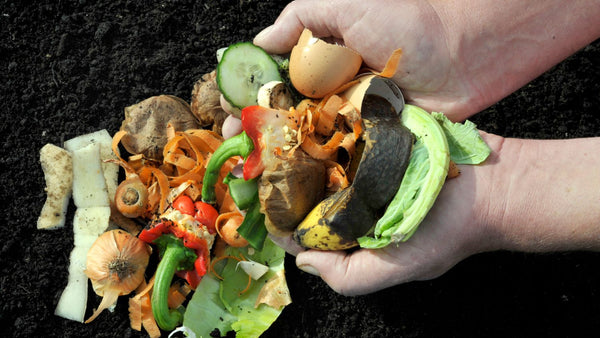Transforming your kitchen scraps and yard waste into a nutrient-rich soil amendment is a simple yet profound process that enriches your garden and plays a crucial role in reducing household waste. Here’s how to make compost at home.
To make compost, add one part green organics (like food scraps) and three parts brown organics (like leaves), layer them in a bin or designated area, keep the pile moist, and turn it regularly to aerate. In 3-6 months, this will break down into dark, nutrient-rich, earthy compost for your garden.
Collecting your food scraps is a vital part of homemade compost, but countertop compost bins can smell and be an eye-sore in your kitchen. Sepura is an in-sink food separator that allows you to compost without touching, seeing, or smelling your food scrap. If you want to make compost collection clean and easy, learn more about Sepura.

Easily Make Your Own Compost at Home
Creating your own compost at home is a fantastic way to reduce waste and enrich your garden soil with nutrients. With a backyard compost bin and a bit of patience, you can transform kitchen scraps and yard debris into black gold for your garden. Here's how to get started:
Step 1: Choose Your Compost Bin
First, select a backyard compost bin suitable for your space and needs. Options range from open bins for easy access to tumbler bins that make turning the compost effortless. If you want to get crafty, you can make DIY compost bins and tumblers. Place your bin in a convenient, level spot with good drainage.
Step 2: Gather Your Composting Materials
Composting requires a mix of green (nitrogen-rich) and brown (carbon-rich) materials. Greens include kitchen scraps like vegetable peels, coffee grounds, and fresh plant material. Browns can be dried leaves, straw, cardboard, and paper. Aim for a balance, ideally a 3:1 ratio of browns to greens.
To make food scrap collection clean and effortless, checkout Sepura’s composting garbage disposal. It collects the scraps washed down your sink in a sealed container while only liquids drain through your plumbing.
Step 3: Start Layering
Begin by laying a few inches of coarse brown materials at the bottom of your bin to aid in drainage and aeration. Follow this with a layer of green materials. Alternate between layers of browns and greens, moistening each layer as you go.
Step 4: Maintain Moisture and Aeration
Your compost pile should be as moist as a wrung-out sponge. If it's too dry, add water; if too wet, add more browns to absorb excess moisture. Regular aeration is key to speeding up the composting process. Turn your pile every 1-2 weeks to introduce air and distribute moisture.
Step 5: Monitor Your Compost
Keep an eye on your compost pile for signs of healthy decomposition. It should be warm in the center and gradually break down into a dark, crumbly matter with an earthy smell. If you notice any unpleasant odors or pests, adjust your green-to-brown ratio and ensure the pile is adequately covered.
Step 6: Harvest Your Compost
Depending on conditions, your compost could be ready in 3-6 months. When the material at the bottom of the bin looks rich, dark, and crumbly, it's time to harvest. Use a shovel or pitchfork to remove the finished compost, leaving any uncomposted material to continue decomposing.
Step 7: Use Your Compost
Incorporate your finished compost into your garden beds, potting mix, or as a top dressing for your lawn. Your plants will thrive with the added nutrients and improved soil structure.

Tips for Success
- Cut Larger Items: Chop or shred larger pieces of waste to speed up decomposition.
- Avoid Meat and Dairy: Some foods should not go in your compost bin. Keep meat, dairy, and oily foods out of your compost to prevent odors and pests.
- Cover Your Pile: Use a lid or tarp to keep your compost moist and deter animals.
Composting is both an art and a science, so don't be discouraged if your first batch isn't perfect. With practice, you'll become more attuned to the needs of your compost pile and enjoy the rewards of rich, homemade compost.
Troubleshooting Common Compost Issues
Even the most attentive composter bins can run into issues. Here's how to tackle some common problems:
- Odors: Bad smells usually mean too many greens. Balance with more browns and turn the pile to aerate.
- Pests: Keep the compost covered and avoid adding meat, dairy, or oily foods to discourage critters.
- Slow Decomposition: Ensure the pile is moist and turn more frequently to introduce oxygen.
Composting Made Simple
Composting is an incredibly rewarding practice that benefits both your garden and the planet. By following these basic guidelines, you can turn waste into treasure and contribute to a more sustainable lifestyle. Remember, composting is a flexible process, so don't be afraid to experiment and find what works best for you.



